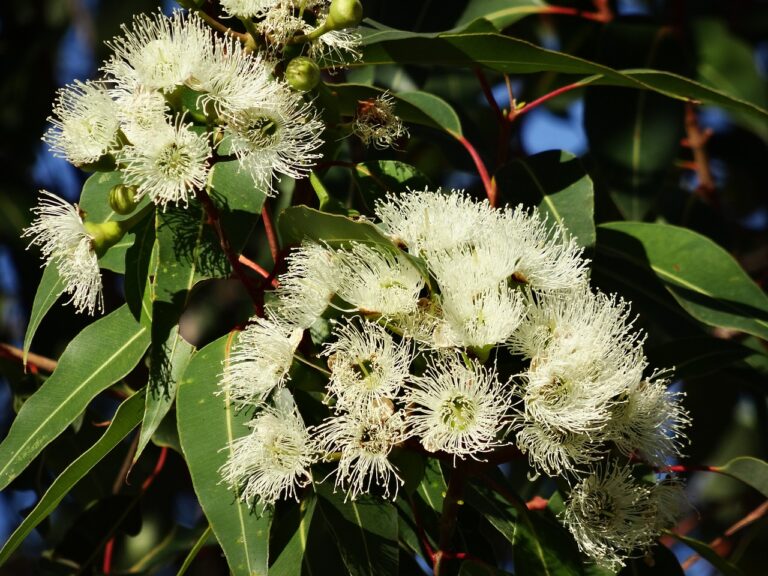Yaupon holly (Ilex vomitoria) is a popular evergreen shrub native to the southeastern United States, known for its attractive foliage and berries. However, one common issue affecting the plant is yaupon holly leaves turn yellow.
The yellowing leaves can be concerning for gardeners and homeowners who want to maintain the health and beauty of their yaupon holly. So, what causes yaupon holly leaves to turn yellow? The common cause is iron chlorosis. The other factors include improper watering, transplant shock, the weather, pests, and diseases.
Understanding the causes behind this leaf discoloration is crucial to address the issue effectively and restore the plant’s vibrancy.
5 reasons why Yaupon Holly leaves turn yellow.
Improper watering.
Improper watering can cause yaupon holly leaves to turn yellow. Water helps the plant stay healthy and in overall functions, including the proper absorption and distribution of nutrients. When yaupon holly plants receive too much or too little water, it can disrupt this delicate balance and lead to leaf discoloration.
Overwatering is a common mistake that gardeners make, and it can result in the roots becoming waterlogged. When the roots are constantly saturated, they are deprived of oxygen, which interferes with their ability to absorb nutrients effectively. This can lead to nutrient deficiencies, including iron chlorosis, which manifests as yellowing leaves.
On the other hand, underwatering can also cause yaupon holly leaves to turn yellow. When plants do not receive enough water, they struggle to uptake nutrients properly. As a result, the roots may not adequately absorb essential minerals, such as iron, leading to deficiencies and subsequent leaf yellowing.
When watering the plant, ensure that you set a proper watering schedule. Regularly monitor the moisture levels in the soil and ensure that it remains consistently moist but not waterlogged. Water the plant when the soil is dry when you touch it.
Using your finger or a moisture meter, you can test the soil moisture content before watering.
Iron chlorosis.
Iron chlorosis is a condition that occurs when a plant, such as yaupon holly, lacks sufficient iron, an essential micronutrient, which is necessary for the synthesis of chlorophyll.
When yaupon holly experiences iron chlorosis, the insufficient availability of iron disrupts chlorophyll production. As a result, the leaves cannot produce adequate chlorophyll, leading to a decline in their green coloration. The lack of chlorophyll causes the leaves to turn yellow, as the remaining pigments in the leaves, such as carotenoids, become more prominent without the dominant green color.
Iron deficiency can occur due to various reasons, including poor soil conditions, alkaline or calcareous soils, excessive soil moisture, and competition from other plants for available iron. These factors can affect the uptake and absorption of iron by the roots of yaupon holly, resulting in its deficiency within the plant.
To fix iron chlorosis in yaupon holly and restore its healthy green foliage, several measures can be taken:
- Soil pH adjustment: Iron availability is strongly influenced by soil pH. If the soil is alkaline or calcareous, it can bind iron, making it less accessible to the plant. Lowering the soil pH by applying elemental sulfur or acidic organic matter (such as peat moss) can help enhance iron availability.
- Iron fertilization: Applying iron-rich fertilizers or chelated iron products directly to the soil or foliar sprays can help provide the necessary iron to the plant. Chelated iron is a form of iron that remains available to the plant in a wider range of soil pH levels.
- Organic matter and compost: Incorporating organic matter, such as compost or well-rotted manure, into the soil can improve its structure, water-holding capacity, and nutrient availability, including iron.
- Soil moisture management: Proper watering practices are crucial for iron uptake. Overwatering can lead to soggy conditions that hinder root function and iron absorption. Conversely, underwatering can limit nutrient uptake as well. Maintaining appropriate soil moisture levels and allowing the soil to dry out slightly between waterings can help ensure optimal iron uptake.
It’s worth noting that severe cases of iron chlorosis may require professional intervention or consultation with a horticulturist or arborist. They can assess the specific conditions and provide targeted treatments to address the iron deficiency and restore the health and vibrant green color of yaupon holly leaves.
Transplant shock
Transplant shock can cause yaupon holly leaves to turn yellow due to the stress and physiological disruptions experienced by the plant during the transplantation process. When a yaupon holly is uprooted and moved to a new location, its root system undergoes damage and disturbance, which can impede its ability to absorb water and nutrients effectively.
During transplant shock, the root system of the yaupon holly may experience root loss or damage, resulting in reduced water uptake and nutrient absorption. Consequently, the plant may struggle to maintain its normal physiological functions, including chlorophyll production. Chlorophyll is responsible for the green coloration in leaves and is crucial for photosynthesis.
Yellowing leaves during transplant shock is typically a temporary response and is often accompanied by other signs of stress, such as wilting or leaf drop. As the yaupon holly adapts to its new environment and develops a healthy root system, it can gradually recover and regain its green coloration.
To minimize transplant shock and help the yaupon holly recover from yellowing leaves, provide proper care and attention during transplantation. This includes minimizing root disturbance, ensuring proper hydration before and after transplantation, and providing suitable soil and environmental conditions for the plant to reestablish itself.
Additionally, maintaining consistent watering practices, avoiding excessive fertilization during the recovery period, and providing adequate shade or protection from extreme weather conditions can all contribute to reducing transplant shock and helping the yaupon holly successfully adapt to its new surroundings.
Pests and diseases.
Pests and diseases can cause yaupon holly leaves to turn yellow through various mechanisms that disrupt the plant’s normal functions and nutrient uptake. When yaupon holly is infested with pests or affected by diseases, it can experience stress, nutrient deficiencies, and damage to its foliage, leading to the yellowing of leaves.
Pests such as aphids, scales, spider mites, or caterpillars can directly feed on the plant’s foliage, sucking out sap or chewing on the leaves. This feeding activity can disrupt the flow of nutrients and water within the plant, depriving it of essential resources.
In addition to direct feeding, pests can transmit diseases to yaupon holly. Some pests act as vectors for pathogens, introducing viruses, bacteria, or fungi into the plant. These diseases can damage the plant’s tissues, impair nutrient uptake, and interfere with photosynthesis. Consequently, the leaves may turn yellow as a sign of stress and declining health.
Fungal diseases such as leaf spot, powdery mildew, or root rot can also contribute to leaf yellowing. These diseases can affect the foliage directly, causing discoloration, lesions, or wilting. The damage inflicted by fungal pathogens disrupts the plant’s ability to absorb water and nutrients, leading to yellowing leaves as a symptom of compromised health.
To address pests and diseases and prevent yellowing leaves in yaupon holly, ensure that you implement effective management strategies such as this:
- Accurately identify the specific pests or diseases affecting the yaupon holly. This helps determine appropriate control measures.
- Practice good cultural habits such as proper watering, adequate fertilization, and regular pruning to maintain overall plant health. Healthy plants are better equipped to resist pests and diseases.
- If necessary, implement an integrated pest management approach that combines preventive measures, biological control methods, and targeted pesticide applications. This approach minimizes environmental impact and promotes natural pest control.
- For fungal or bacterial diseases, employ proper sanitation practices, such as removing and disposing of infected plant parts. Apply appropriate fungicides or bactericides as recommended.
- Depending on the specific pests present, use targeted insecticides, insecticidal soaps, horticultural oils, or beneficial insects to control pest populations.
Weather.
The weather can contribute to yaupon holly leaves turning yellow through various environmental factors and stressors that affect the plant’s physiological processes. Extreme or unfavorable weather conditions can disrupt the normal functioning of yaupon holly, leading to leaf yellowing.
Extreme temperatures, whether hot or cold, can stress yaupon holly and cause leaf discoloration. High temperatures can accelerate water evaporation and transpiration, leading to dehydration and nutrient deficiencies.
Cold temperatures, especially frost or freezing conditions, can damage plant tissues and disrupt cellular processes, resulting in yellowing or browning of leaves.
On the other hand, excessive exposure to intense or prolonged periods of direct sunlight can cause leaf scorching in yaupon holly. Sunburn occurs when the plant’s tissues are exposed to excessive light and heat, leading to cell damage and reduced chlorophyll production. This can manifest as yellowing or browning of leaves, especially in areas directly exposed to the sun.
In deciduous varieties of yaupon holly, leaf yellowing can be a normal part of the plant’s seasonal cycle. During autumn, as the days shorten and temperatures drop, the plant prepares for dormancy and sheds its leaves. This natural process leads to leaf yellowing and eventual leaf drop.





